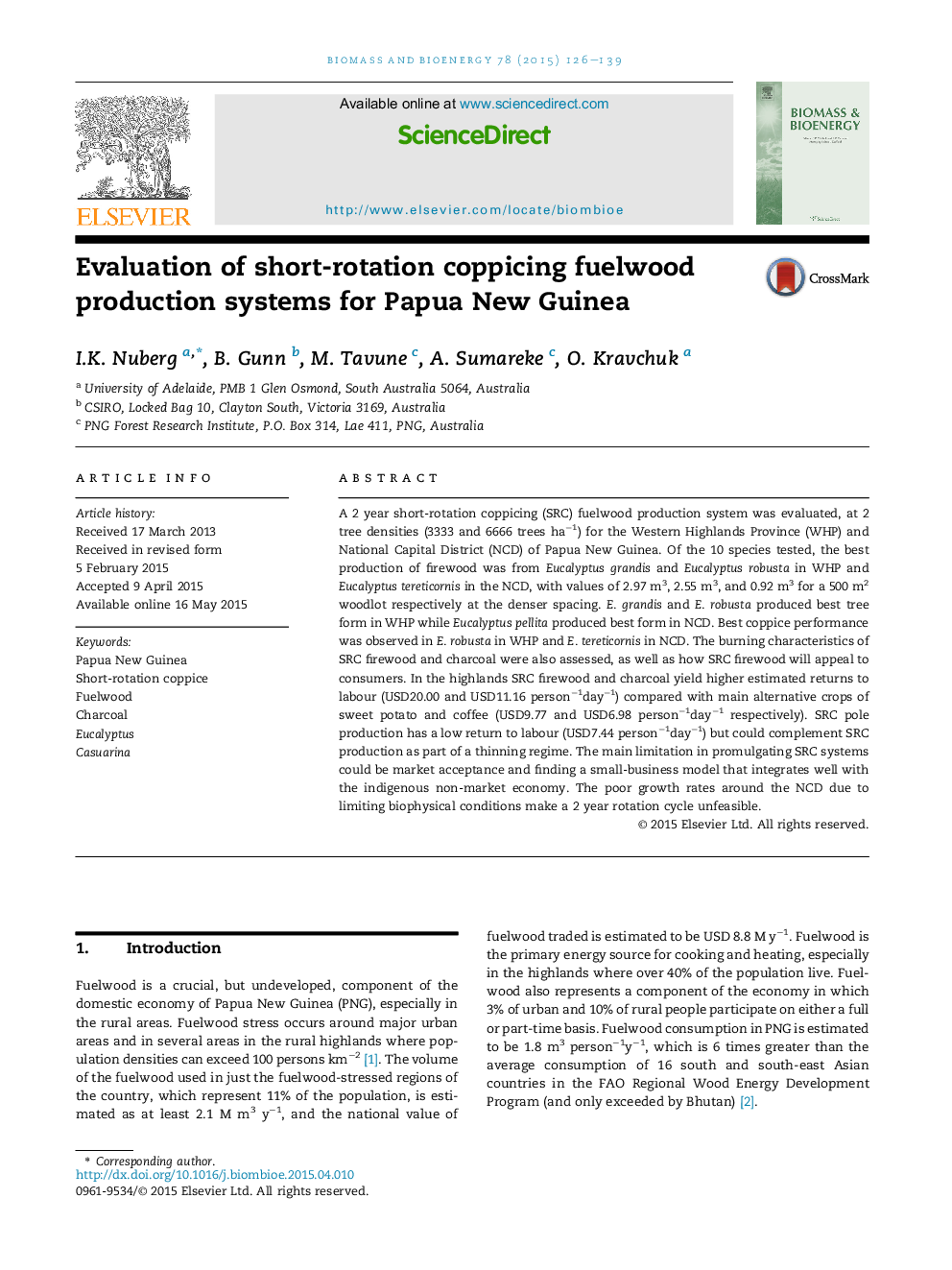| Article ID | Journal | Published Year | Pages | File Type |
|---|---|---|---|---|
| 7063961 | Biomass and Bioenergy | 2015 | 14 Pages |
Abstract
A 2 year short-rotation coppicing (SRC) fuelwood production system was evaluated, at 2 tree densities (3333 and 6666 trees haâ1) for the Western Highlands Province (WHP) and National Capital District (NCD) of Papua New Guinea. Of the 10 species tested, the best production of firewood was from Eucalyptus grandis and Eucalyptus robusta in WHP and Eucalyptus tereticornis in the NCD, with values of 2.97Â m3, 2.55Â m3, and 0.92Â m3 for a 500Â m2 woodlot respectively at the denser spacing. E. grandis and E. robusta produced best tree form in WHP while Eucalyptus pellita produced best form in NCD. Best coppice performance was observed in E. robusta in WHP and E. tereticornis in NCD. The burning characteristics of SRC firewood and charcoal were also assessed, as well as how SRC firewood will appeal to consumers. In the highlands SRC firewood and charcoal yield higher estimated returns to labour (USD20.00 and USD11.16 personâ1dayâ1) compared with main alternative crops of sweet potato and coffee (USD9.77 and USD6.98 personâ1dayâ1 respectively). SRC pole production has a low return to labour (USD7.44 personâ1dayâ1) but could complement SRC production as part of a thinning regime. The main limitation in promulgating SRC systems could be market acceptance and finding a small-business model that integrates well with the indigenous non-market economy. The poor growth rates around the NCD due to limiting biophysical conditions make a 2 year rotation cycle unfeasible.
Related Topics
Physical Sciences and Engineering
Chemical Engineering
Process Chemistry and Technology
Authors
I.K. Nuberg, B. Gunn, M. Tavune, A. Sumareke, O. Kravchuk,
